City Evicts Vendors from Brooklyn Bridge
The ban on Brooklyn Bridge vendors, effected Jan. 3, is part of a wider crackdown by the city in the name of pedestrian safety. Some vendors and elected officials have criticized the new policy as too draconian. And City Council Member Gale Brewer says she plans to re-introduce a bill this session that will allow some vendors to return.
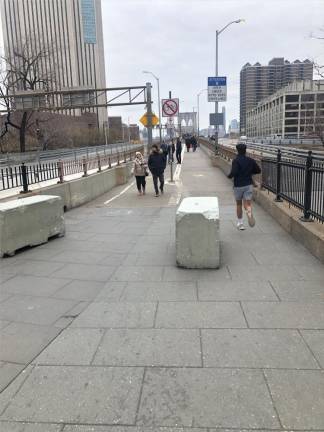
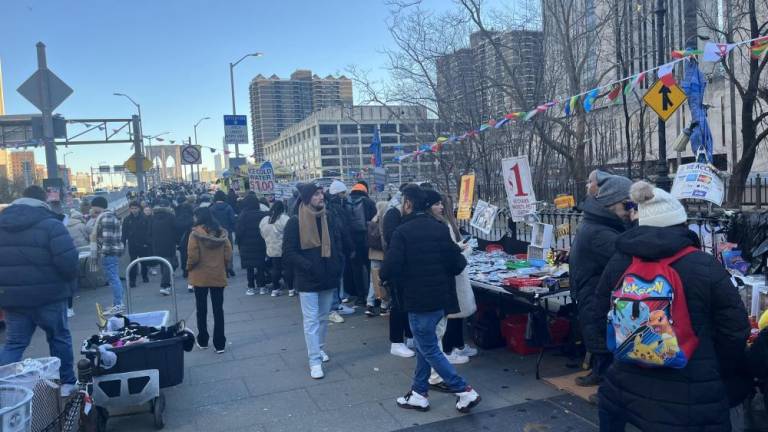
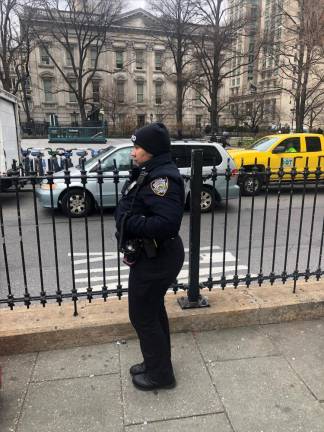
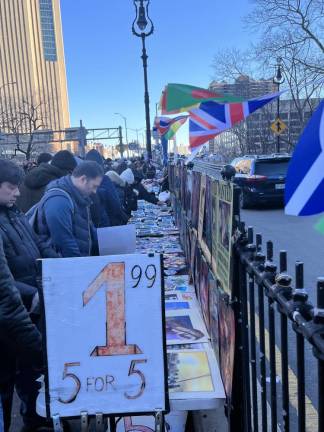
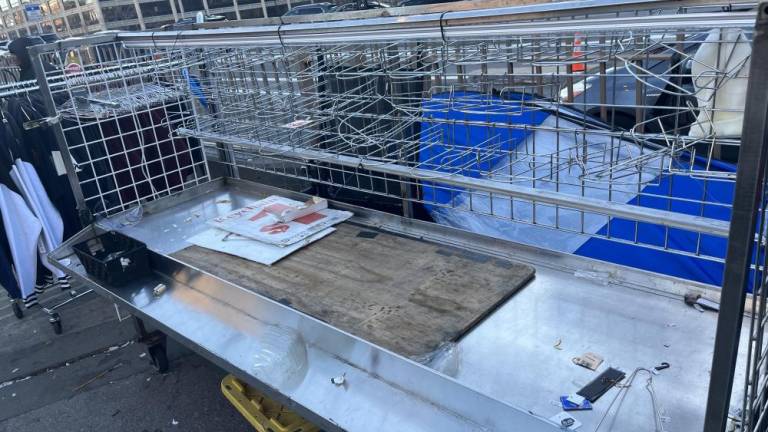
The row of stalls and tables that once sold cheap souvenirs along the Brooklyn Bridge is no more. A new DOT rule banning any “peddler, vendor, hawker, or huckster” from conducting business there and on other bridges came into effect Jan. 3 with NYPD officers and DOT personnel directing any remaining vendors off the bridge, as well as removing any stalls and wares that they left behind. Just to ensure the message is clear, city officials also hung up “no vending” signs all around the area.
The rule, first proposed in October 2023, is meant to enhance pedestrian safety, which proponents say is compromised by sellers who impede part of Brooklyn Bridge’s walkway. “Tourists and New Yorkers alike deserve to walk across it and enjoy its beauty without being packed together like sardines or risking their safety,” said Mayor Eric Adams in a statement. “We’re not going to allow disorder to continue in these cherished places.” DOT wrote in the City Journal last October that the ability of pedestrians to exit the bridge safely was an especially pressing issue.
Brooklyn Bridge, one of New York City’s most prominent landmarks, hosted more than 34,000 pedestrians on a typical fall weekend last year. According to DOT, the width of the walkway averages 16 feet but can shrink to as little as five. Although the space for pedestrian egress was narrowed by the presence of vendors, they typically remained behind a line that left at least two-thirds of the walkway for visitors.
“What does [DOT] mean people cannot walk, people cannot run?” asked Hassan, an immigrant from Egypt who has vended on the bridge since 2008. “It’s a touristic place. It’s like Times Square. It will be like this no matter if there are vendors or not,” said when he spoke with Our Town on the last day the vendors were there on Jan. 2.
Both Hassan and DOT confirmed that NYPD officers began handing out multilingual fliers to vendors a few days before they would have to leave. This came after Hassan and other vendors tried, without success, to find a compromise with the city over how to reduce overcrowding while allowing vendors to continue selling their wares. “I wish the government could take a step back and think about the human rights,” he said. “We get most of our income from selling here, and we need to provide for our families. But they don’t think about that.”
MD Rahman, who owns a hot dog and bottled water stand, called the new policy “crazy,” saying that DOT should have targeted unlicensed vendors setting up shop in the narrowest parts of Brooklyn Bridge rather than issuing a blanket ban on all vendors. “I worked hard to get a license and to make an income,” he said. “They should have talked to us to find a solution rather than just take our jobs away. Now I don’t know what I’m going to do, and how I’m going to feed my wife and children.“
New York City’s political brass is divided over the policy. While Adams is directing city agencies to crack down on vendors, Council Member Gale Brewer is proposing a bill that would ban vending only in walkways narrower than 16 feet and require stalls to be separated by at least 20 feet. Both she and Council Member Christopher Marte have also expressed support for allowing vendors on designated areas, which Brewer said would be particularly easy to enforce on Brooklyn Bridge.
“This is a compromise that is restrictive and gets a lot of congestion off of the bridge, while also making sure people can make a living,” said Sam Goldsmith, Brewer’s communications director. “It’s the start of a conversation, and there’s plenty of room to negotiate even if the exact numbers have to be moved around.” Because the bill, Int. 1275, was introduced in the city council session that ended in December 2023, Brewer plans to re-introduce it for the current session in the next few weeks. If the bill passes, its provisions would replace the ban currently in effect.
Adams, however, staunchly opposed the bill in 2023, and there is no sign that his position has changed. ”We put an initiative in place to clean up the Brooklyn Bridge,” said Adams last December. “Councilwoman Brewer came and said, let the vendors stay.”
For now, some vendors have moved over to City Hall, right next door to Brooklyn Bridge--at least until the city decides to enforce the new DOT rule there as well.